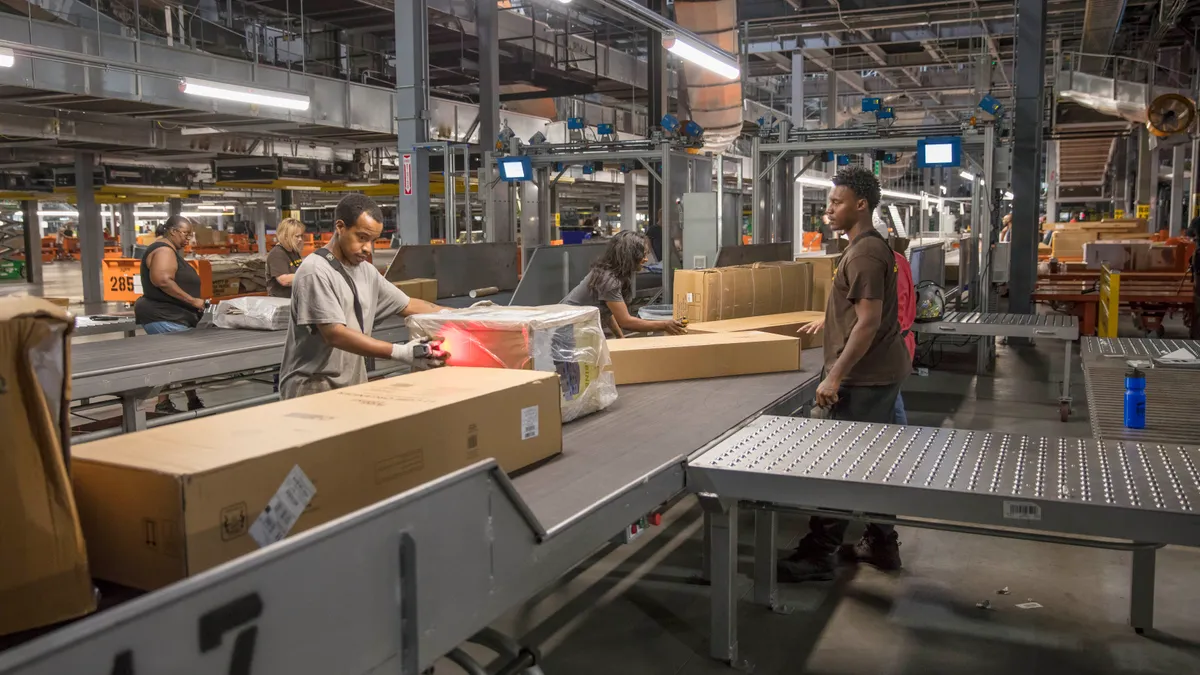Dive Brief:
- In May, FedEx and UPS on-time performance dropped to their lowest monthly averages so far in 2020, according to numbers from ShipMatrix and Convey, though the magnitude of the decline varies greatly between the two sources. UPS said it did not comment on third-party data sources, but directed Supply Chain Dive to ShipMatrix's figures when asked about the accuracy of Convey's numbers.
- On-time performance dropped to 91% for FedEx and 95% for UPS in May, according to ShipMatrix. Convey reported both companies' on-time performance to be 75% for the month. Convey said its figures are based on an original estimated delivery date from carrier manifests and retailer order pages, adding that carriers will often revise the estimated delivery date during transit. Satish Jindel, the president of ShipMatrix, disagreed with Convey's methodology and said the carrier wasn't necessarily given the item on the day the order was placed.
- FedEx's on-time rate dropped more than UPS' because it began shifting SmartPost volume from the U.S. Postal Service into its internal network at the beginning of the year. When the pandemic led to higher parcel volume, FedEx's driver fleet had to handle that alongside its SmartPost service "without having the advanced opportunity to stand up for it like they do for the peak," Jindel told Supply Chain Dive in an interview.

Dive Insight:
The drop in on-time rates is not all that surprising as the pandemic has resulted in a greater reliance on e-commerce from consumers, Adams B. Steven, an assistant professor of supply chain management at the University of Maryland, told Supply Chain Dive in an email.
"FedEx, UPS, USPS, [and] Amazon all saw surges in the demand for their services putting a serious pressure on their capacities to meet this surge," Steven said.

As FedEx and UPS experience peak-season-level volume, there have been reports that the carriers are hiring fewer workers compared to the same time last year, he said, plus the drop in airfreight capacity has complicated that leg of the supply chain.
"In the end, the intersection of reduced capacity and increased volume results in non-deliveries, delayed deliveries, and consequently low on-time performance," Steven said.
If demand is going to continue then it would make sense to start hiring workers, Jindel said. But with retailers beginning to reopen brick-and-mortar locations across the country, it's hard to say what this will do to e-commerce demand.

"If I was at FedEx, I may be looking to supplement [the workforce], but not to the full extent because by the time I bring them on board [and] they can start to work I may not need them," Jindel said.
FedEx's delivery numbers did improve throughout May, dropping to 88% earlier in the month before rising to end at an average of 91%, he said.
The carriers have made changes to their service guarantees as a result of the pandemic. Commitment times for UPS Next Day Air Saver and UPS 2nd Day Air A.M., for example, were "extended to end-of-day until further notice," the carrier said on its website. Keeping up with these changes is an important part of understanding on-time delivery rates during the pandemic, Jindel said.














